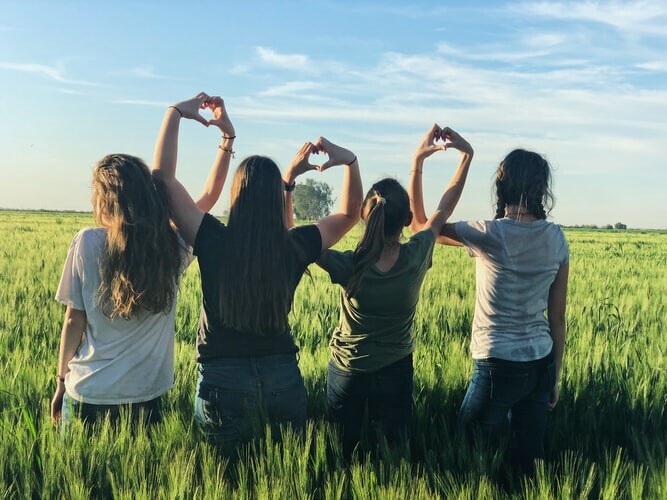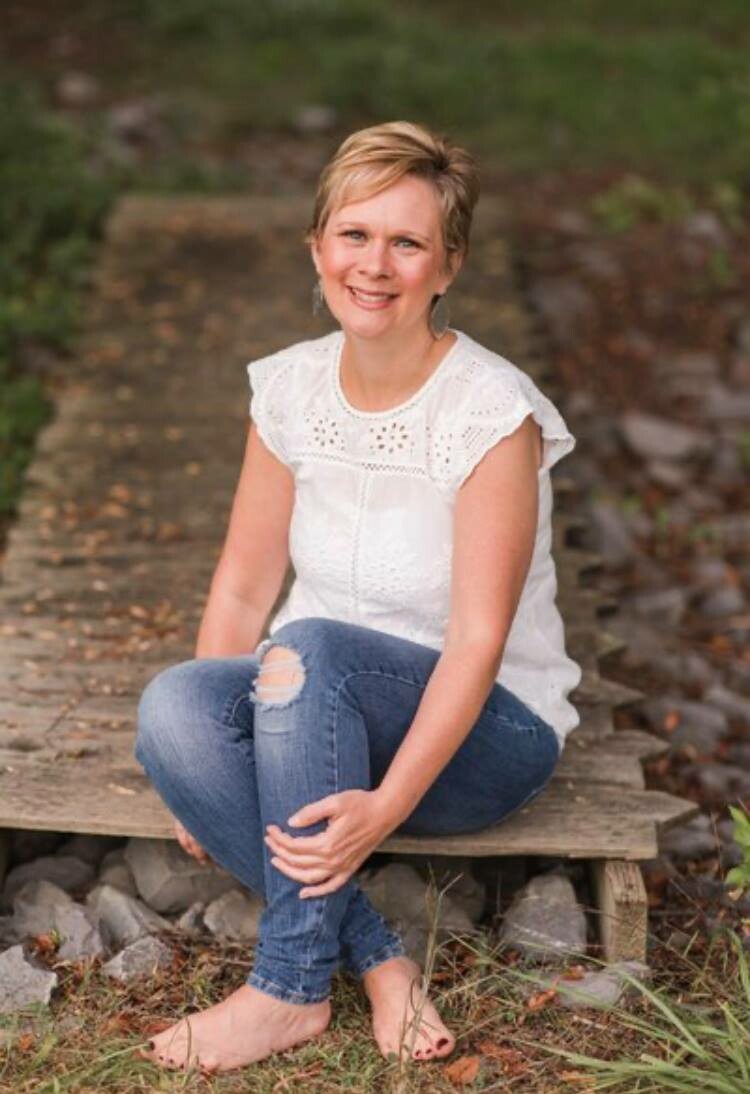
I grew up in church and youth group was a highlight of my high school years, we were a tight-knit group, a mismatched family of sorts. Some of us came from safe and loving homes, others were dealing with abuse of every kind. I believe our leaders did the best they could, but I have memories of things that happened at youth group and can say with confidence there defiantly was not enough supervision.
Over the past thirty years, I have been involved in youth ministry. Youth group. Youth camps. Youth retreats. Mission trips. I have been exposed to most denominations within the Christian faith community, and I saw concerns in every corner.
I took a strong stand to protect young people from physical and sexual predators and was even laughed at in certain settings for doing so. Laughed at for raising awareness about dangerous possibilities for our precious children. Now that I understand trauma, I realize there were so many other ways we should have and could have protected them. When we know better, we must do better.
This is a plea to anyone and everyone who works with children, middle schoolers, high schoolers, and college aged students. From the bottom of my mama’s heart, I am asking us all to look at what we have done, survey the damage we have caused or allowed (whether intentional or not) and do what we can to reconcile the broken-hearted back to the heart of the Father.
First, and foremost, we must do a better job of vetting the adults we allow to work with our young people. Predators are everywhere and they love, love, love preying upon innocent, naïve and vulnerable children. A criminal background check is a step in the right direction, but only a small percentage of sexual abuse cases are reported, and of that number, an even smaller number of convictions. As the #metoo movement gave courage to the #churchtoo movement, more cases are being reported than ever before. So many were assaulted when they were minors, sworn or threatened to secrecy and are now adults who are finding a voice to share their stories. Many churches fail to go to the authorities, sweep these cases under the rug, allow the predator to remain in leadership or quietly dismiss him and he moves on to another church or community and continues abusing children.
I have learned so much from my own life experiences and from advocates who are experts in this field. Jimmy Hinton of JimmyHinton.org co-hosts The Speaking Out Against Sexual Abuse podcast with his mother, Clara Hinton. Their story is gut-wrenching and heart-breaking, as Jimmy’s own father and childhood hero, also a pastor, was convicted of heinous crimes against children. Jimmy tells his story and calls churches to account in his book, The Devil Inside: How My Minister Father Molested Kids in Our Home and Church for Decades and How I Finally Stopped Him. I listen to their podcast weekly and have learned so much from these warriors. If you are ready and willing to make your church a safe place for others, this is a great place to begin. My favorite quote, in the final chapter of his book, sums up Jimmy’s heart: “Survivors have been badly wounded, both by their abusers and by the church. My congregation doesn’t look down on them. We welcome them! Where other churches are welcoming predators and shunning victims, we are welcoming victims and shunning predators.” (Page 152)
Dale Ingraham is the author of Tear Down the Wall of Silence: Dealing with Sexual Abuse in our Churches. I reached out to him for some baseline requirements for vetting adults who work with children. “…background checks are only a first step. Keep in mind that only 2-4% of sexual predators ever go to prison. So over 90% of sex offenders will pass a background check.
1. Everyone fills out an application (you should be able to find a good application online)
2.Background checks
3. Check all references
4. All workers should go through abuse prevention training every year.
5. Windows in all doors, except of course, bathrooms.
5. Appropriate number of adults per child ratio.
6. There should be a trained staff member who walks the hallways keeping track of classrooms through the windows and observing who is coming and going.
7. Cameras in appropriate places.
There are other guidelines. I would say an excellent source would be Basyle (Boz) Tchividjian’s book...’The Child Safeguarding Policy Guide’ for churches and Ministries.”
Sarah McDugal and Daron Pratt co-authored Myths We Believe, Predators We Trust: 37 Things You Don’t Want to Know About Abuse in Church (But You Really Should). THIS BOOK IS A QUICK READ AND A MUST FOR ALL CHRISTIANS. PLEASE, PLEASE, PLEASE READ IT.
Myth: “Ignoring abuse doesn’t impact evangelism.”
Myth: “Churches are safe because we are a family of believers.”
Myth: “Abusers are easy to spot, socially awkward and tend to stay on the fringes.”
Myth: “My church is filled with really nice people, I probably don’t know any perpetrators of abuse.”
Myth: “Perpetrators wouldn’t dare show up at my church.”
Myth: “Real abuse is obvious.”
Myth: “Most reports of abuse are made up by people pretending to be victims.”
Myth: “Getting falsely accused is a huge risk for good men.”
Myth: “Abusers don’t usually have multiple victims.”
Myth: “When someone is abused, they usually tell right away.”
Myth: “If something was happening in my church, I’d be able to tell.”
Myth: “If someone said they were being abused, my church would defiantly believe them.”
Myth: “My church would never let a predator keep access to more victims.”
Myth: “A person who keeps making noise about abuse is a troublemaker.”
Myth: “Victims of abuse are welcomed and supported at my church.”
Myth: “Sexual addiction and abuse is an adult issue.”
Myth: “When an abuser cries and says they’ve changed, we should believe them and extend grace.”
Myth: “If an abuser has acted repentant for at least six months, we should trust them again.”
Myth: “Courts often get it wrong and churches should be known for grace, forgiveness, and second chances.”
Myth: “If someone was never convicted in a criminal court, we should assume they’re innocent.”
Myth: “If someone is abusing you, go to them alone and follow Matthew 18 first.”
Myth: “Scripture traches us to handle abuse internally.”
Myth: “Church members report abuse as often as everyone else.”
Myth: “Church leaders should stick together and have each other’s back.”
Myth: “When you forgive something, you aren’t supposed to bring it up ever again.”
Myth: “Good Christians will seek to restore and reconcile as quickly as possible no matter what.”
Myth: “Loving an abuser means giving them another chance.”
Myth: “Pornography isn’t “real” adultery, and shouldn’t be blown out of proportion.”
Myth: “People who accuse others of abuse are usually lying.”
Myth: “If someone was abusing a child in my church, I would definitely pick up on the red flags.”
Myth: “All child abusers are pedophiles.”
Myth: “If (someone) is sexually abusing children, it’s because they aren’t sexually satisfied at home.”
Myth: “Sometimes children lead abusers on and ask for it.”
Myth: “My child would absolutely tell me if someone was hurting them or touching them.”
Myth: “Abuse is caused by anger problems or childhood trauma and we should feel sorry for abusers.”
Myth: “The abuser said it was a one-time mistake and we should take their word for it.”
Myth: “If we have background checks and good policies, our church will be totally safe.”
Sarah McDugal, Jennifer Jill Schwirzer and Nicole Parker authored Safe Churches: Responding to Abuse in the Faith Community. This book is a must for every pastor, ministry leader and people helper. The book outlines the systems of abuse (abuse is so much more than broken bones and bruises): child abuse, cultural abuse, emotional abuse, financial abuse, intellectual abuse, pets and property abuse, physical abuse, psychological abuse, sexual abuse, social abuse, spiritual abuse, and verbal abuse.
“Safe Churches is for you if you want to…
Discover how to recognize and respond to red flags.
Feel more equipped to educate your church staff.
Protect the vulnerable.
Discern genuine repentance.
Reflect God’s character to your church’s children.
“Safe Churches presents proven approaches to handling abuse at church in ways that are both biblically redemptive and legally responsible.” (From Sarah’s website)
These three books are a great place to begin. Beyond these resources, there are ministries that are equipping churches to become safe havens. Data bases are being created, to reveal convicted sex criminals in various denominations and to showcase churches and individuals who are trained as safe resources.
Jimmy Hinton: https://jimmyhinton.org/
Sarah McDugal: https://www.wildernesstowild.com/
Chris Moles: http://www.chrismoles.org/
Basyle "Boz" Tchivdjiam/Godly Response to Abuse in the Christian Environment G.R.A.C.E.: https://www.netgrace.org/
This post is a work in progress. I am reaching out to experts in this field and will add baseline steps that need to be taken when choosing volunteers and staff who will work with children and youth. I am also collecting information regarding the legal and responsible ways to report abuse cases.
While this post focuses mostly on protecting youth from physical and sexual abuse, I also feel compelled to write about keeping them safe emotionally, mentally, and spiritually. Part 2 is coming soon.
Over the past thirty years, I have been involved in youth ministry. Youth group. Youth camps. Youth retreats. Mission trips. I have been exposed to most denominations within the Christian faith community, and I saw concerns in every corner.
I took a strong stand to protect young people from physical and sexual predators and was even laughed at in certain settings for doing so. Laughed at for raising awareness about dangerous possibilities for our precious children. Now that I understand trauma, I realize there were so many other ways we should have and could have protected them. When we know better, we must do better.
This is a plea to anyone and everyone who works with children, middle schoolers, high schoolers, and college aged students. From the bottom of my mama’s heart, I am asking us all to look at what we have done, survey the damage we have caused or allowed (whether intentional or not) and do what we can to reconcile the broken-hearted back to the heart of the Father.
First, and foremost, we must do a better job of vetting the adults we allow to work with our young people. Predators are everywhere and they love, love, love preying upon innocent, naïve and vulnerable children. A criminal background check is a step in the right direction, but only a small percentage of sexual abuse cases are reported, and of that number, an even smaller number of convictions. As the #metoo movement gave courage to the #churchtoo movement, more cases are being reported than ever before. So many were assaulted when they were minors, sworn or threatened to secrecy and are now adults who are finding a voice to share their stories. Many churches fail to go to the authorities, sweep these cases under the rug, allow the predator to remain in leadership or quietly dismiss him and he moves on to another church or community and continues abusing children.
I have learned so much from my own life experiences and from advocates who are experts in this field. Jimmy Hinton of JimmyHinton.org co-hosts The Speaking Out Against Sexual Abuse podcast with his mother, Clara Hinton. Their story is gut-wrenching and heart-breaking, as Jimmy’s own father and childhood hero, also a pastor, was convicted of heinous crimes against children. Jimmy tells his story and calls churches to account in his book, The Devil Inside: How My Minister Father Molested Kids in Our Home and Church for Decades and How I Finally Stopped Him. I listen to their podcast weekly and have learned so much from these warriors. If you are ready and willing to make your church a safe place for others, this is a great place to begin. My favorite quote, in the final chapter of his book, sums up Jimmy’s heart: “Survivors have been badly wounded, both by their abusers and by the church. My congregation doesn’t look down on them. We welcome them! Where other churches are welcoming predators and shunning victims, we are welcoming victims and shunning predators.” (Page 152)
Dale Ingraham is the author of Tear Down the Wall of Silence: Dealing with Sexual Abuse in our Churches. I reached out to him for some baseline requirements for vetting adults who work with children. “…background checks are only a first step. Keep in mind that only 2-4% of sexual predators ever go to prison. So over 90% of sex offenders will pass a background check.
1. Everyone fills out an application (you should be able to find a good application online)
2.Background checks
3. Check all references
4. All workers should go through abuse prevention training every year.
5. Windows in all doors, except of course, bathrooms.
5. Appropriate number of adults per child ratio.
6. There should be a trained staff member who walks the hallways keeping track of classrooms through the windows and observing who is coming and going.
7. Cameras in appropriate places.
There are other guidelines. I would say an excellent source would be Basyle (Boz) Tchividjian’s book...’The Child Safeguarding Policy Guide’ for churches and Ministries.”
Sarah McDugal and Daron Pratt co-authored Myths We Believe, Predators We Trust: 37 Things You Don’t Want to Know About Abuse in Church (But You Really Should). THIS BOOK IS A QUICK READ AND A MUST FOR ALL CHRISTIANS. PLEASE, PLEASE, PLEASE READ IT.
Myth: “Ignoring abuse doesn’t impact evangelism.”
Myth: “Churches are safe because we are a family of believers.”
Myth: “Abusers are easy to spot, socially awkward and tend to stay on the fringes.”
Myth: “My church is filled with really nice people, I probably don’t know any perpetrators of abuse.”
Myth: “Perpetrators wouldn’t dare show up at my church.”
Myth: “Real abuse is obvious.”
Myth: “Most reports of abuse are made up by people pretending to be victims.”
Myth: “Getting falsely accused is a huge risk for good men.”
Myth: “Abusers don’t usually have multiple victims.”
Myth: “When someone is abused, they usually tell right away.”
Myth: “If something was happening in my church, I’d be able to tell.”
Myth: “If someone said they were being abused, my church would defiantly believe them.”
Myth: “My church would never let a predator keep access to more victims.”
Myth: “A person who keeps making noise about abuse is a troublemaker.”
Myth: “Victims of abuse are welcomed and supported at my church.”
Myth: “Sexual addiction and abuse is an adult issue.”
Myth: “When an abuser cries and says they’ve changed, we should believe them and extend grace.”
Myth: “If an abuser has acted repentant for at least six months, we should trust them again.”
Myth: “Courts often get it wrong and churches should be known for grace, forgiveness, and second chances.”
Myth: “If someone was never convicted in a criminal court, we should assume they’re innocent.”
Myth: “If someone is abusing you, go to them alone and follow Matthew 18 first.”
Myth: “Scripture traches us to handle abuse internally.”
Myth: “Church members report abuse as often as everyone else.”
Myth: “Church leaders should stick together and have each other’s back.”
Myth: “When you forgive something, you aren’t supposed to bring it up ever again.”
Myth: “Good Christians will seek to restore and reconcile as quickly as possible no matter what.”
Myth: “Loving an abuser means giving them another chance.”
Myth: “Pornography isn’t “real” adultery, and shouldn’t be blown out of proportion.”
Myth: “People who accuse others of abuse are usually lying.”
Myth: “If someone was abusing a child in my church, I would definitely pick up on the red flags.”
Myth: “All child abusers are pedophiles.”
Myth: “If (someone) is sexually abusing children, it’s because they aren’t sexually satisfied at home.”
Myth: “Sometimes children lead abusers on and ask for it.”
Myth: “My child would absolutely tell me if someone was hurting them or touching them.”
Myth: “Abuse is caused by anger problems or childhood trauma and we should feel sorry for abusers.”
Myth: “The abuser said it was a one-time mistake and we should take their word for it.”
Myth: “If we have background checks and good policies, our church will be totally safe.”
Sarah McDugal, Jennifer Jill Schwirzer and Nicole Parker authored Safe Churches: Responding to Abuse in the Faith Community. This book is a must for every pastor, ministry leader and people helper. The book outlines the systems of abuse (abuse is so much more than broken bones and bruises): child abuse, cultural abuse, emotional abuse, financial abuse, intellectual abuse, pets and property abuse, physical abuse, psychological abuse, sexual abuse, social abuse, spiritual abuse, and verbal abuse.
“Safe Churches is for you if you want to…
Discover how to recognize and respond to red flags.
Feel more equipped to educate your church staff.
Protect the vulnerable.
Discern genuine repentance.
Reflect God’s character to your church’s children.
“Safe Churches presents proven approaches to handling abuse at church in ways that are both biblically redemptive and legally responsible.” (From Sarah’s website)
These three books are a great place to begin. Beyond these resources, there are ministries that are equipping churches to become safe havens. Data bases are being created, to reveal convicted sex criminals in various denominations and to showcase churches and individuals who are trained as safe resources.
Jimmy Hinton: https://jimmyhinton.org/
Sarah McDugal: https://www.wildernesstowild.com/
Chris Moles: http://www.chrismoles.org/
Basyle "Boz" Tchivdjiam/Godly Response to Abuse in the Christian Environment G.R.A.C.E.: https://www.netgrace.org/
This post is a work in progress. I am reaching out to experts in this field and will add baseline steps that need to be taken when choosing volunteers and staff who will work with children and youth. I am also collecting information regarding the legal and responsible ways to report abuse cases.
While this post focuses mostly on protecting youth from physical and sexual abuse, I also feel compelled to write about keeping them safe emotionally, mentally, and spiritually. Part 2 is coming soon.












